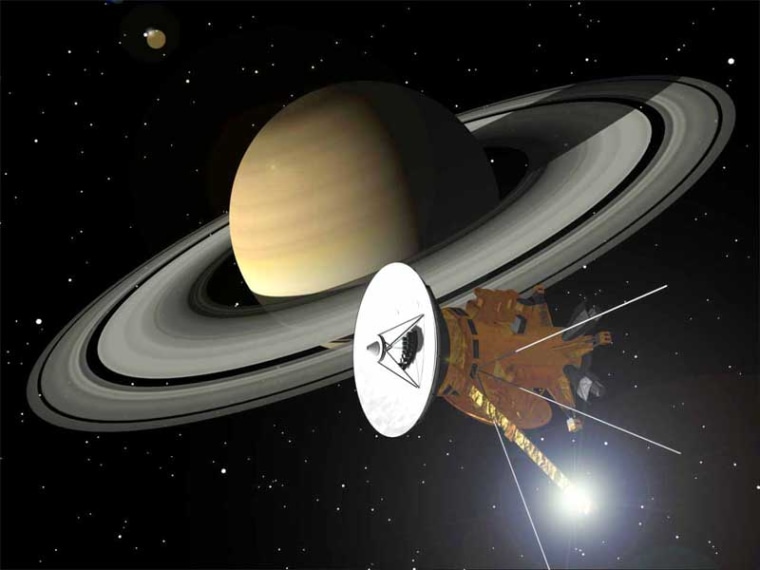NASA reawakened the Cassini spacecraft from a forced hibernation while in orbit around Saturn on Wednesday, after three weeks of stalled science work due to a computer glitch.
All of the probe's science instruments have been reactivated, and the spacecraft is in good health, just in time to record observations of Saturn's icy moon Enceladus during a close flyby set for Nov. 30, NASA officials said. [ ]
Cassini had been operating in a — called "safe mode" — since Nov. 2 because of an ill-timed flip of a data bit in Cassini's command and data system computer.
The prevented Cassini's main computer from registering a vital instruction, and the spacecraft went into standby mode as a result.
"Engineers have traced the steps taken by the computer during that time and have determined that all spacecraft responses were proper, but still do not know why the bit flipped," NASA officials said in an update released Wednesday.
The computer glitch marked the sixth time that Cassini has gone into safe mode since its launch in 1997. During these periods, the probe beams engineering and spacecraft health data to its mission operations center at NASA's Jet Propulsion Laboratory in Pasadena, Calif., but cannot perform science observations.
The glitch prevented Cassini from studying Titan, Saturn's largest moon, during a Nov. 11 flyby of the cloud-covered satellite.
The upcoming Nov. 30 flyby will bring Cassini within about 30 miles (48 kilometers) of the surface of Enceladus, Saturn's sixth-largest moon. The frigid world has icy geysers jetting from its south pole and — possibly — a of liquid water.
Cassini will fly near Enceladus' north polar region on this flyby, and then will perform another rendezvous just like it three weeks later. The twin encounters will mark the spacecraft's second-closest approach to Enceladus (Cassini dipped to within 16 miles, or 25 kilometers, of the moon in October 2008).
During the Enceladus flyby, Cassini will use its instruments to take gravity measurements of the icy moon. The results will be compared with those from an earlier flyby of Enceladus' south pole to better understand the moon's interior structure, according to NASA officials.
Cassini will also sample the charged-particle environment around Enceladus and snap images in visible light and other parts of the spectrum during the close encounter, they added.
The Cassini spacecraft arrived at Saturn in 2004 to study the , and to deliver the European-built Huygens probe to land on Titan. Cassini completed its primary mission in 2008 and is now in a second phase that extends through May 2017.
The mission is a collaborative effort between NASA, the European Space Agency and the Italian Space Agency.
